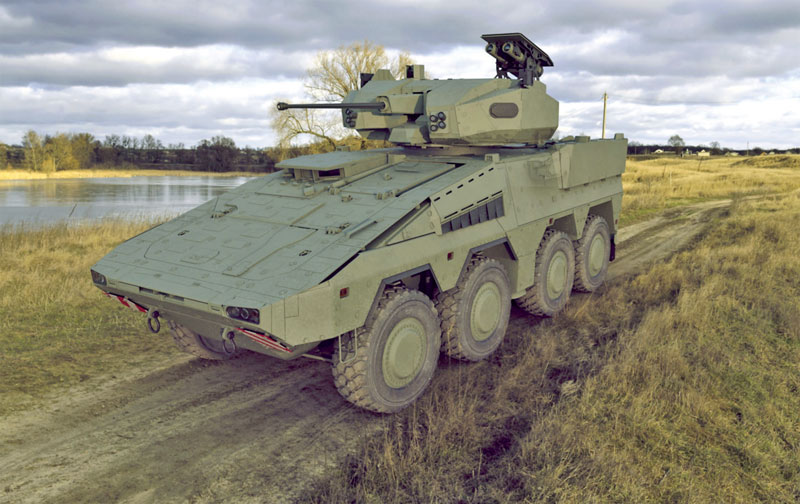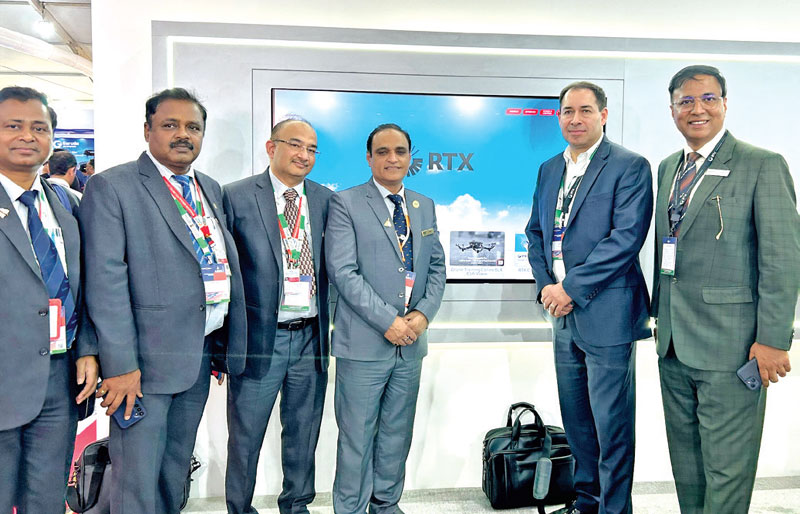Aero India News | March 2025
Rafael-L&T Sign MoU to Jointly Offer TROPHY APS for Indian Defence Platforms
Rafael Advanced Defence Systems Ltd (Rafael) and Larsen & Toubro (L&T) signed of a Memorandum of Understanding (MoU), during Aero India 2025, aimed at offering of TROPHY Active Protection System (APS) indigenously. TROPHY APS is the only proven and operational APS system in the world.

TROPHY is a critical battlefield technology featuring Counter Unmanned Aerial Systems capabilities and defences that enable protection of an entire platform and soldiers. Through this cooperation TROPHY APS shall be offered as a unique solution that can be integrated on India’s defence platforms.
This collaboration is in line with the government of India’s initiative to forge international collaborations to fast track the indigenisation process for critical and emerging technologies and, aligns with ‘Aatmanirbhar Bharat’ and ‘Make in India, Make for the World’ vision.
CEO of Rafael Advanced Defence Systems, Yoav Tourgeman emphasised the significance of this collaboration: “The partnership between Rafael and L&T for TROPHY APS is a major milestone for both the companies. It will not only enhance the operational capabilities of the Indian armed forces but also our commitment to India’s defence manufacturing ecosystem and the nation’s operational readiness. Together, Rafael and L&T, will contribute to the strengthening of India’s defence capabilities through world-class technologies.”
Senior vice president & head of L&T Precision Engineering & Systems, Arun Ramchandani said: “This partnership between two technology-driven companies, Rafael and L&T, brings the newest version of the battle proven TROPHY APS as a bespoke solution customised to Indian combat platforms, and will be manufactured in India with local sustenance capabilities. This APS will enhance the survivability of in-service as well as future combat platforms to be inducted by the Indian armed forces.”
RTX’s Collins Aerospace signs MRO agreement with HAL for LCA Fighter Jet
Collins Aerospace, an RTX business, signed an agreement with Hindustan Aeronautics Limited (HAL) to establish a Maintenance, Repair and Overhaul (MRO) facility at HAL Accessories complex in Lucknow. The licensing and spares agreement will enable the facility to provide repair and overhaul on electrical power generation systems for India’s indigenous war fighter, the Light Combat Aircraft (LCA).

The facility will provide repairs and overhaul services for Collins Aerospace’s Integrated Drive Generators (IDGs) and the Generator Control Units (GCUs) that power some of the Indian Air Force (IAF) fighter jets.
“The new MRO facility expands upon our long-standing partnership with Hindustan Aeronautics Limited. We are fully committed to in-country, long-term sustainment of India’s war fighter fleet,” said vice president of Aftermarket, Power & Controls at Collins Aerospace, Ryan Hudson.
Once operational, the MRO will support all LCA Mk 1 aircraft operational within the Indian Air Force. The facility’s capabilities can be scaled in the future to cater to similar Collins Aerospace systems on other military platforms.
“The establishment of MRO facility will enhance self-reliance and result in reduced Turn-around Time (TAT) in repair and will also enable HAL to provide better customer support for the LCA fleet. This MRO facility is also technically capable to meet future requirements for new platforms,” said chairman and managing director of Hindustan Aeronautics Limited, D.K. Sunil.
Collins Aerospace has supported the IAF for more than 80 years and has products on various platforms like the indigenous LCA Tejas Mk 1, C17, C295, C130J, P-8I, AH-64E, CH-47F and MH-60R. With an Indian workforce of more than 7,000 employees across Pratt & Whitney and Collins Aerospace, RTX has one of the largest presence amongst aerospace and defence firms in India.
HAL and Safran Aircraft Engines Sign Agreement on LEAP Engine Programme
HAL signed a long-term contract with Safran Aircraft Engines (SAE), the world's leading Aircraft engine maker for supply of turbine forged parts for their LEAP engines during Aero India 2025 here today.
An MoU (Memorandum of Understanding) was signed between the two companies in October 2023, to develop industrial cooperation with commercial engine parts manufacturing, as part of the Indian government’s ‘Make in India’ policy. This is the first contract as part of this industrial cooperation. Under the terms of this contract, HAL will produce forged parts for LEAP Engine at its state-of-the-art Ring Rolling facility at Foundry & Forge Division in Bengaluru, supporting LEAP programme’s ramp-up for global airline requirements.
The contract was signed by general manager, Foundry & Forge Division of HAL, Anil Kumar in presence of CEO (Bangalore Complex), HAL Jayakrishnan. S and, purchasing VP of Safran Aircraft Engines, Dominique Dupuy.
“Safran and HAL have a long-standing relationship enriched over the past few decades through the joint development of the ‘Shakti’ helicopter engine, which also paved the way for co-design and co-development of the IMRH engine. We are delighted to take this collaboration to the next level and support their LEAP engine production with critical Nickel Ring forgings”, said chairman & managing director, HAL, D.K. Sunil.
“We are very enthusiastic about continuing this partnership with HAL,” said Dominique Dupuy. “We are perfectly in line with the objectives set out in our 2023 agreement for the production of forged parts.”
India is CFM’s third largest market in terms of the number of engines in service, with 75 per cent of the Indian commercial fleet equipped with CFM engines. Today, of the 500 aircraft operated by seven Indian airlines with CFM engines, over 370 are LEAP-powered, and over 2,000 engines on order are for Indian airlines. Safran Aircraft Engines is strengthening its footprint in India with five production units and the sixth
Subscribe To Force
Fuel Fearless Journalism with Your Yearly Subscription
SUBSCRIBE NOW
We don’t tell you how to do your job…
But we put the environment in which you do your job in perspective, so that when you step out you do so with the complete picture.








